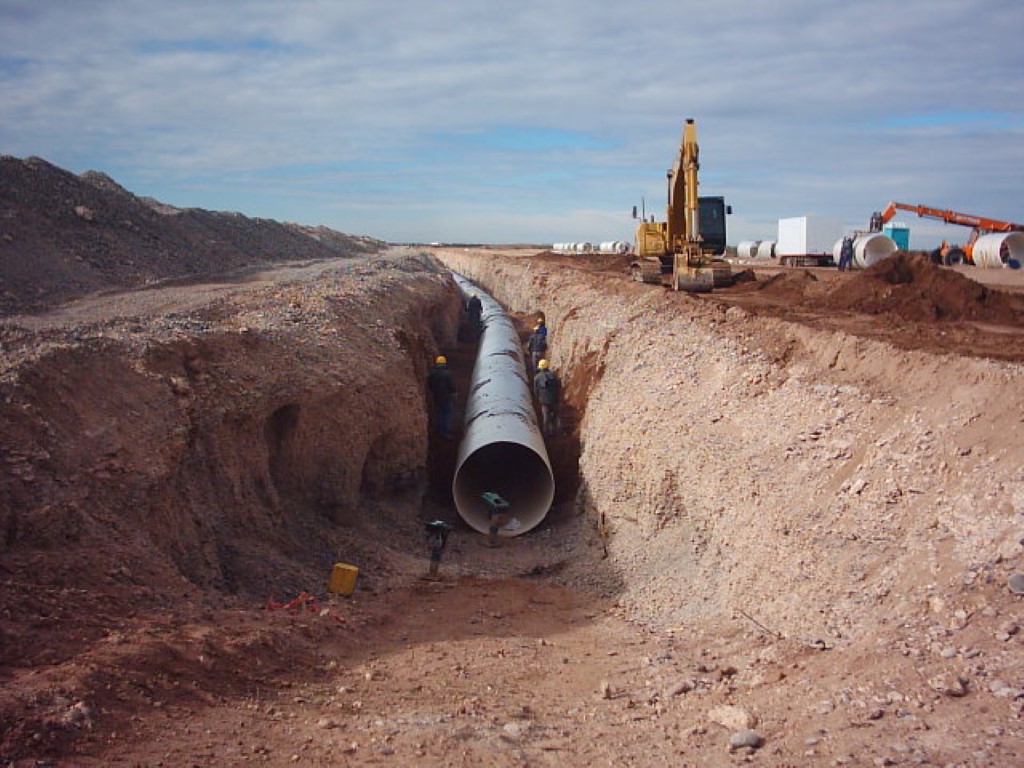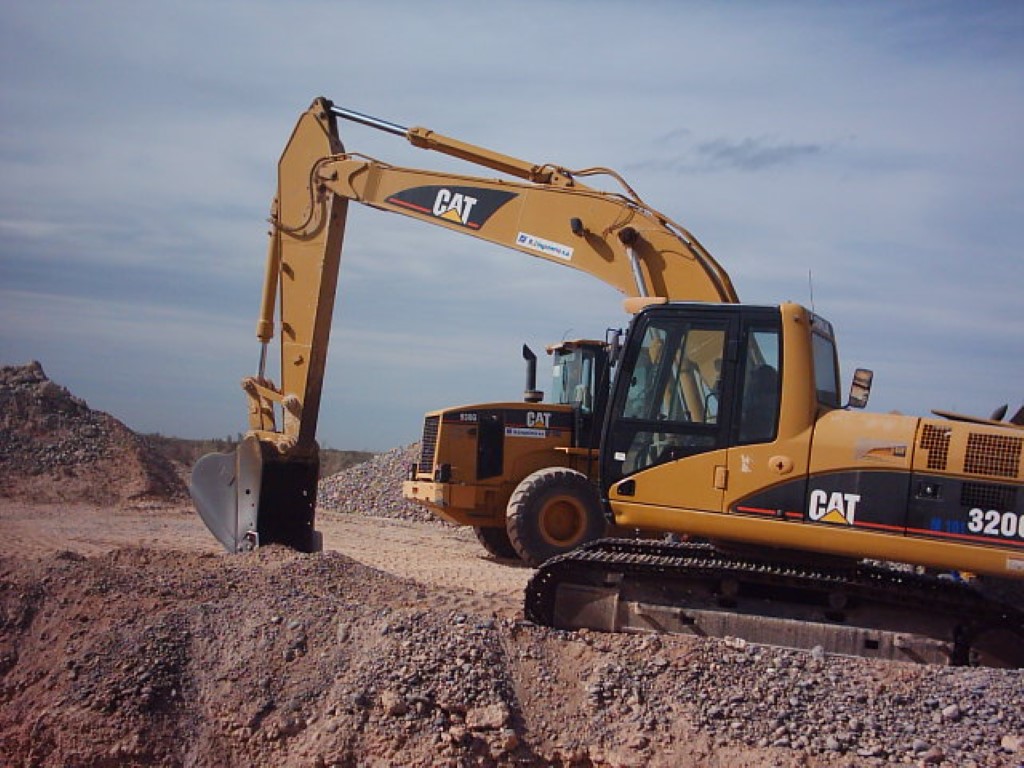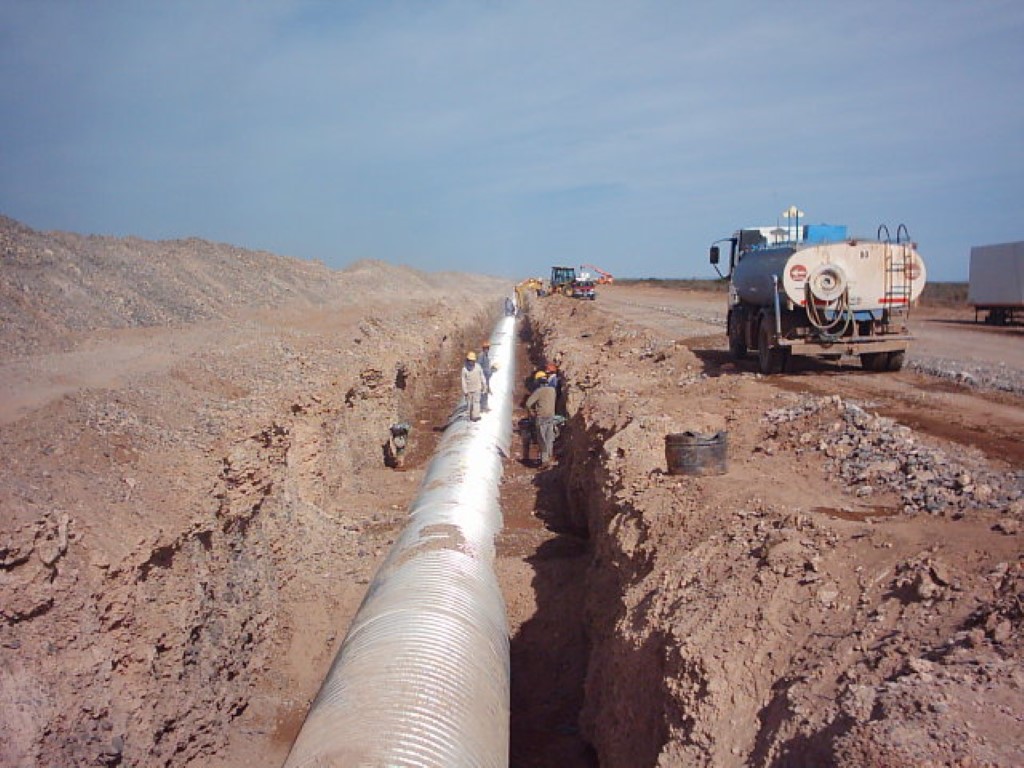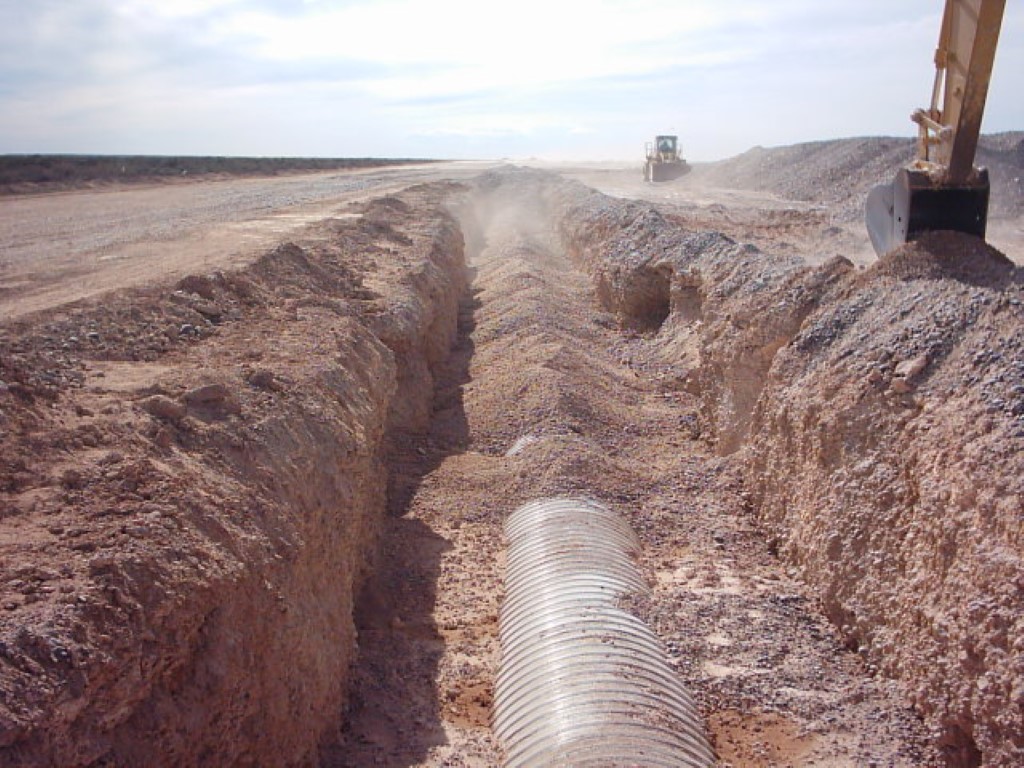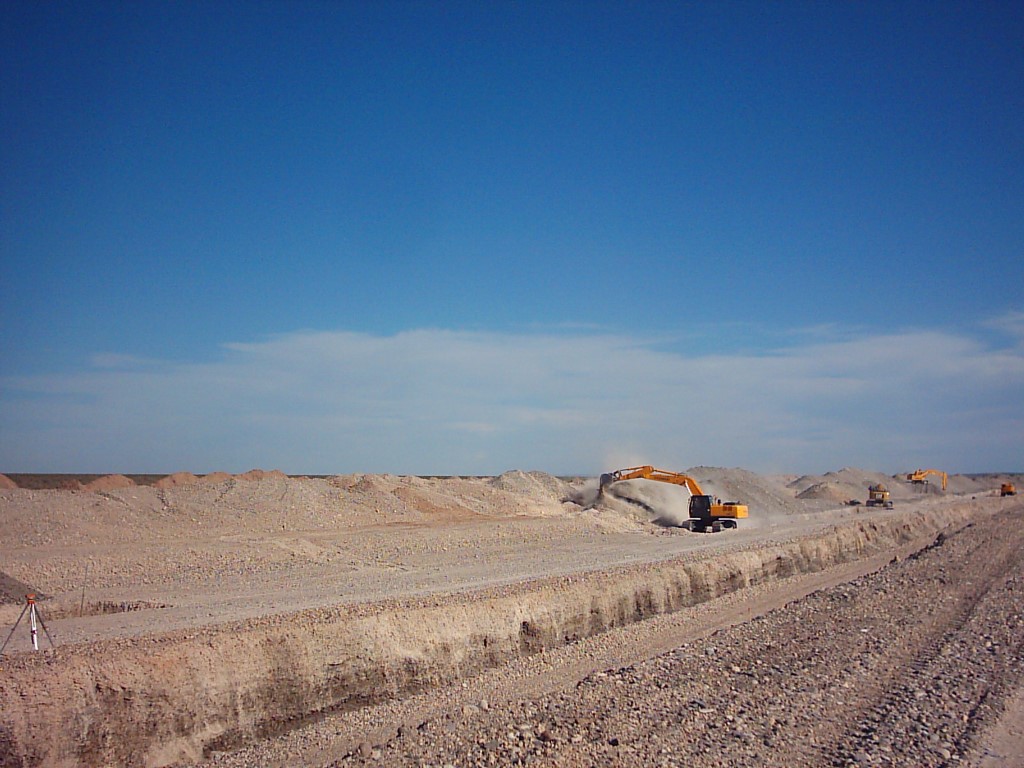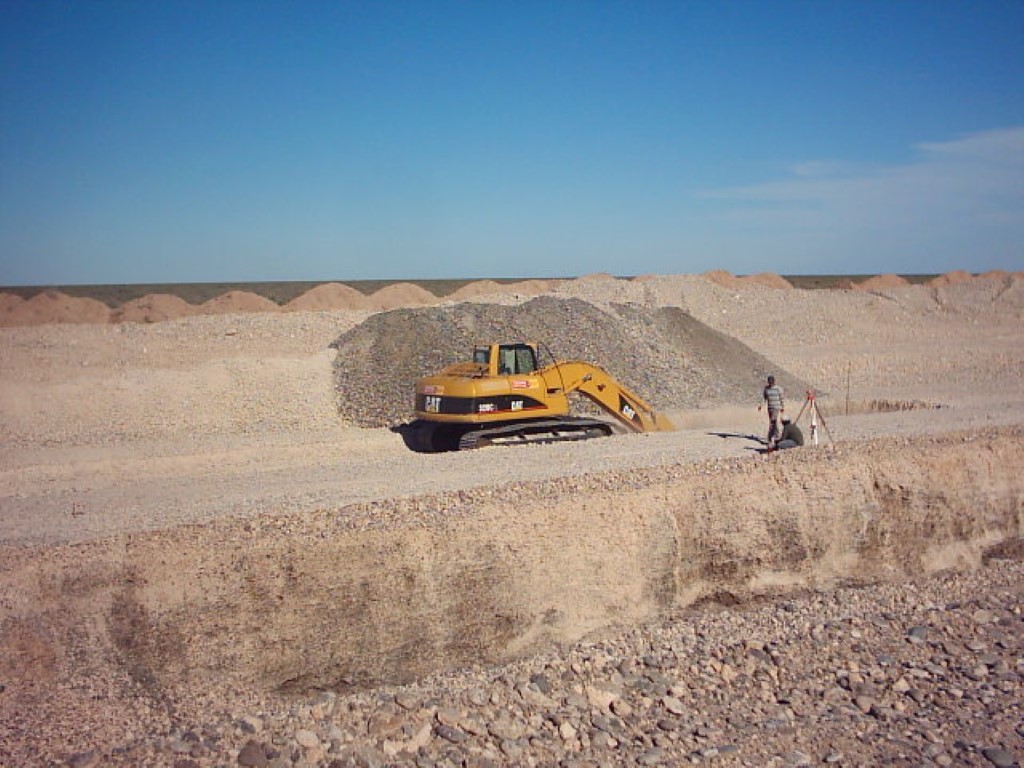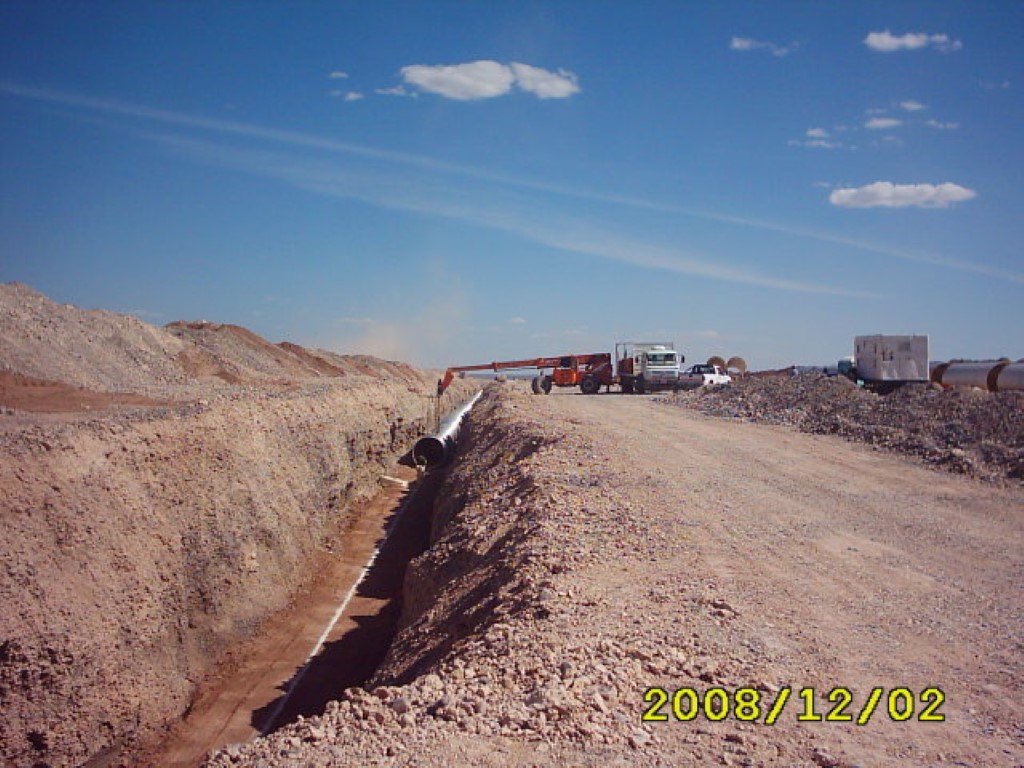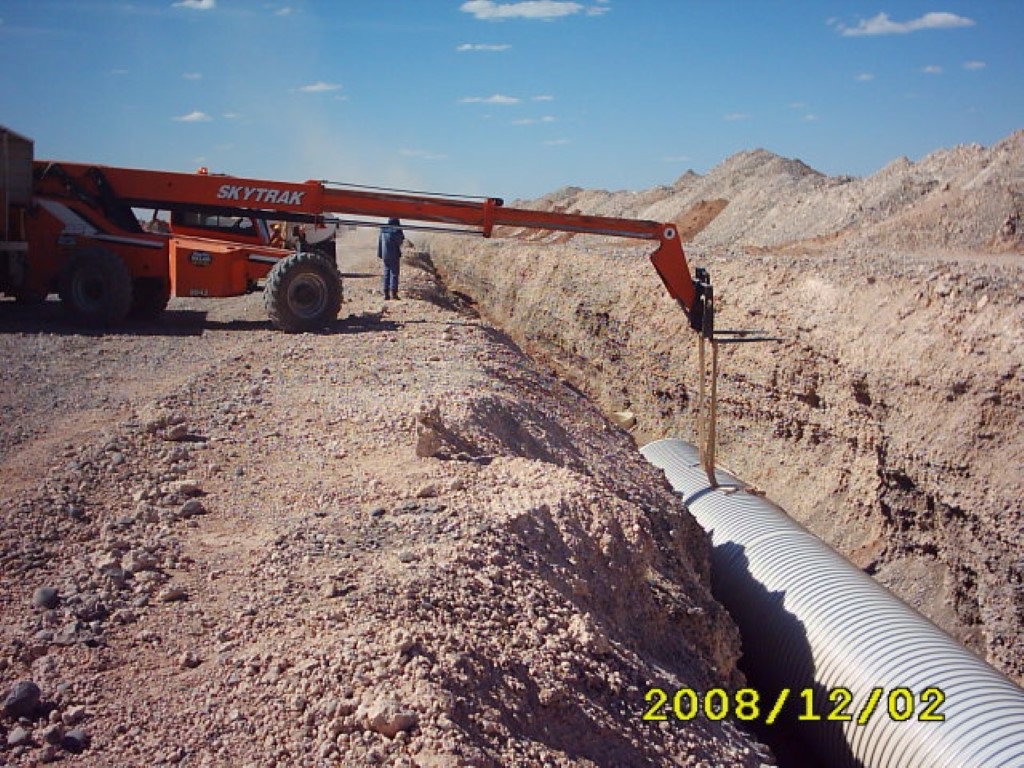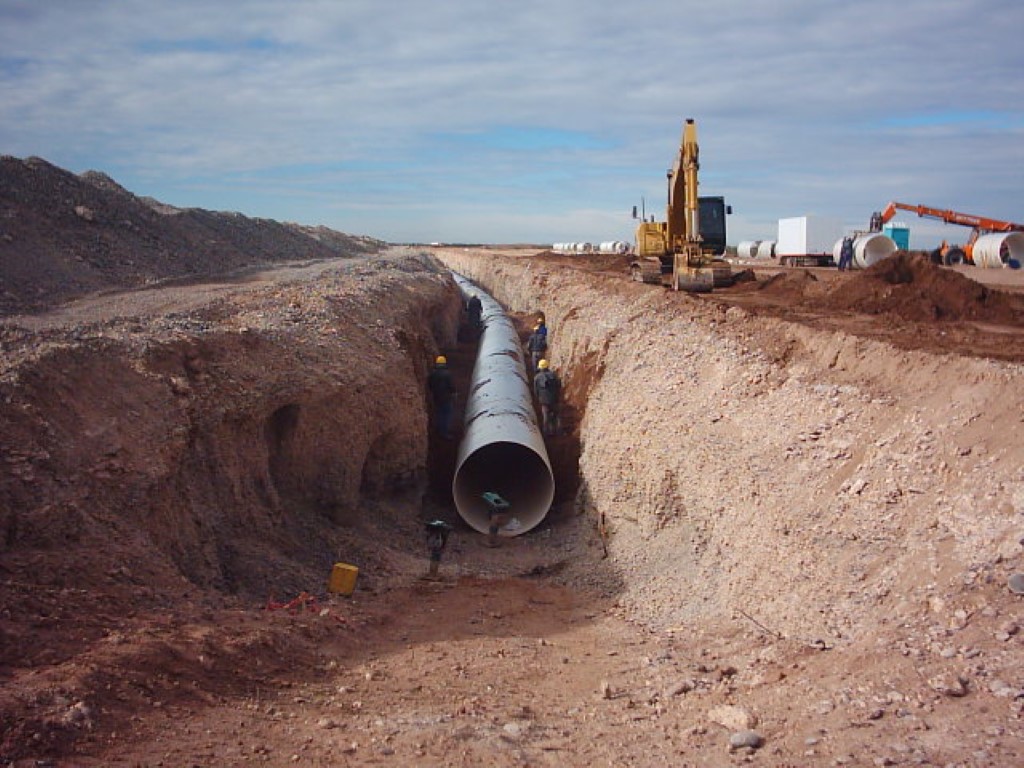 Hydraulics
Hydraulics
Main Conduction and Complementary Works - Section I - Supply and Irrigation System
City: CONFLUENCIA – PROVINCE OF NEUQUÉN
rnTimeline: 300 days
rnYears: 2007 – 2009
CHARACTERISTICS:
rnSection I of the Conduction Works consists of:
- Transition canal.
- Headworks for diverting 36 m³/s of irrigation water and 6 m³/s of water for purification, separately.
- 3 flat gates for irrigation water diversion and 5 flat gates for regulating potable water, operated by electro-manual actuators, both locally and remotely.
- Algae filter equipment and self-cleaning fish barrier with waste collection system, located at the inlet of the potable water component.
- 15.4 km of gravity-fed aqueduct made of PVC pipes with diameters of 1.90 m and 1.85 m.
- 5 km of unlined irrigation canal with an initial flow capacity of 9.2 m³/s, later lined with concrete to reach 19 m³/s.
- Complementary works: central control building, filter and gate hall, fish guard house, 15 inspection and venting chambers along the aqueduct, 2 diversion chambers for surplus and irrigation (up to 1.5 m³/s) with their corresponding regulation gates and siphon, telemetry and gauging system for the irrigation canal and aqueduct, 2 culverts, perimeter fencing for the 5 km of excavated canal, and 15.4 km of maintenance roads for the canal and aqueduct.
- Maintenance equipment: double-hook overhead crane, 2 sets of stoplogs for closing two spans of the filtration system and one of the irrigation canal, and an emergency generator. rn
Consortium: ROVELLA CARRANZA S.A. – C.N. SAPAG S.A. – R.J INGENIERÍA S.A.
IMPORTANCE:
rnThe Marí Menuco project will ensure a sufficient supply of high-quality drinking water for the populations of Neuquén Capital, Centenario, Plottier, and Vista Alegre, with a demographic projection horizon extending to the year 2030.
rnAdditionally, it will enable irrigation of 30,000 hectares, transforming this area of Neuquén Province into an agro-industrial development hub, creating numerous direct jobs in the productive stage and generating significant economic impact from infrastructure investment.
rnIt will definitively solve the water shortage issues experienced during summer in the Confluencia region, with a 25-year growth projection. As a result, Neuquén Capital will have a “cold” water reserve (current pumping) available for emergencies or in case of technical stops at the Marí Menuco facility.
rnThis is a large-scale project with wide-ranging social, economic, and service impacts for the Province of Neuquén.
STRATEGIC LINES OF PRODUCTIVE DEVELOPMENT
- Irrigation of 30,000 hectares distributed in Bajo Los Barreales and El Salitral, using gravity-fed water.
- Favorable natural conditions for organic agricultural development that preserves natural resources and the environment.
- Will nearly double the agricultural land currently under irrigation in Neuquén Province.
- Proximity to major population centers enhances investment appeal due to closeness to markets, basic infrastructure, communications, transport, energy, etc.
- The main infrastructure works and subsequent cultivation of lands will increase job creation and drive transformation of the province’s productive matrix.
- Source: EPAS. Provincial Water and Sanitation Authority.
Gallery
